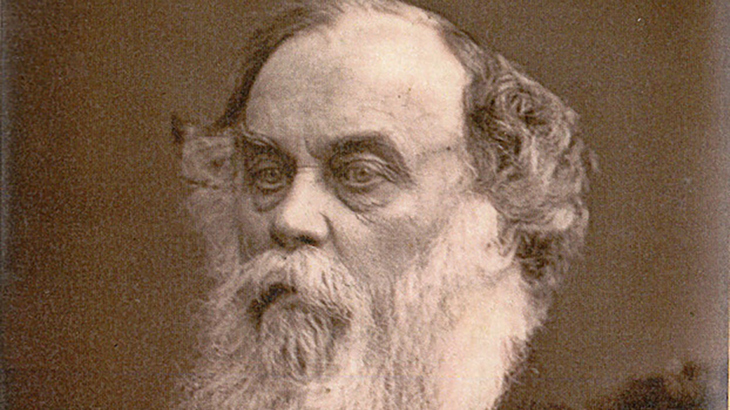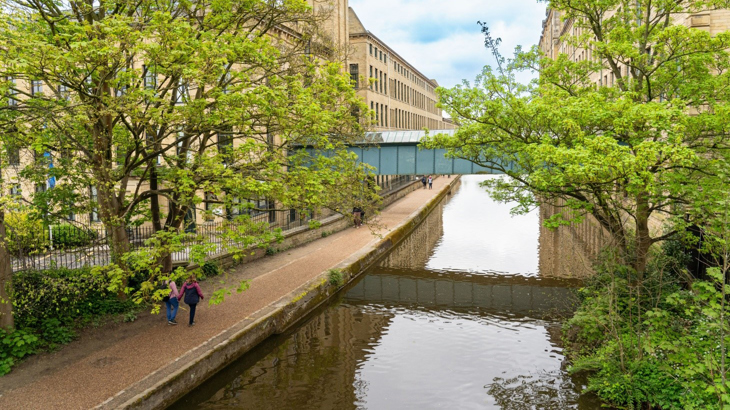One of our latest improvement projects on the National Cycle Network is on the Leeds and Liverpool Canal, which runs through UNESCO World Heritage site of Saltaire. The work continues a rich legacy from the town’s founder, Titus Salt.

Titus Salt founded Saltaire to create a modern factory with a healthier working and living environment for his employees
The nineteenth century mill town of Saltaire in West Yorkshire seems an appropriate place for a revival of active travel.
Now a UNESCO World Heritage Site, this model village was built in 1853 by a charismatic wool philanthropist called Titus Salt.
Salt designed Saltaire for his mill so that people could easily walk to work and get everything they needed close by. The classical-style buildings included 800 homes, grocery shops, two churches, a school and a hospital.

The modern day canal towpath of the Leeds and Liverpool canal is now a popular route for walking, wheeling and cycling. PHOTO: Simon Dewhurst Photography.
Shane Ewen, Professor of urban history at Leeds Beckett University says Saltaire was probably one of the original liveable neighbourhoods.
“You could argue that this was a form of sustainable urban planning. Saltaire was designed to have everything you needed.
“It was a precursor to more recent planning practices such as the 15-minute neighbourhood.”
Professor Ewen says Salt chose the location because of its excellent transport connections by rail, the River Aire and the Leeds and Liverpool Canal. He also valued its spectacular views over river and open countryside.
Bradford was the fastest growing town in the country at the time, he explains, but it had little infrastructure to support it.
Public health was also very poor, so Salt encouraged better access to nature and exercise.
In common with the contemporary philanthropist Joseph Rowntree, and later, William Lever, he believed that a healthier workforce was more productive, and good for business.
He opened Roberts Park close to the mill, which is still a popular local green space.

Professor Shane Ewen
“Salt saw the benefits of green open space, clean air, for peoples’ public health,” says Professor Ewen.
“He was a believer in rational recreation. Instead of wasting time on their day off he wanted people to do something family-friendly and healthy.”
Today Saltaire is a highly desirable place to live and remains true to Salt’s original values.
The once-smoking factory is now a three-floor art gallery and shopping centre, including a permanent collection for the Bradford artist David Hockney.
Saltaire’s original model homes, with their lofty Italian-style architecture, are much in demand, and there’s a bustling village centre with shops, cafes and services.
The town’s environmental transport connections remain a big attraction. There’s a regular train service to Leeds and Bradford, narrowboats and barges cruise along the Leeds and Liverpool canal.
The canal towpath, once a busy working waterway, is now part of the National Cycle Network (route 695), with links to Bradford and Leeds.
We recently worked with Canal and Rivers Trust to upgrade a section of canal towpath between Bingley to Shipley. It’s got an accessible smooth new surface and a wider path, helping more people to use the path on foot, cycle, mobility scooters and wheelchairs.
Students have painted a mural on Otley Road Bridge at Shipley which features Titus Salt and other heritage features along the route.
The improvements are part of a longer- term plan to create an accessible path connecting towns and villages along the Leeds and Liverpool Canal. It will help thousands more people travel actively to work, school and leisure.
If Salt were alive now, he would probably have approved.





